The Best Drywall Primer for the Money: free shipping? Wow, yes.
In this article you will find my buying guide: the key point about even the best drywall primer does not need to have a lot of stain-blocking firepower (explained below). It simply seals and preps for the topcoat.
In my 30+ years as a pro, I’ve found the easiest painting is applying drywall primer. It’s a breeze. It goes on easily and as long as you do not leave drips, it dries flat and you don’t need to worry about looks. Here I highly recommend any top brand: avoid the no name brands.
What’s the best primer for drywall? Easy.
I’ve used many brands and there is no great difference between the top makers. My recommendation is to go with any of the top brands. I often have it delivered from amazon or other places. My best advice is simply don’t go with a brand you have never heard of. Who knows what they put in there!
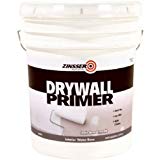
- New walls: Zinsser has a very good primer for new walls: my top recommendation for a primer for new walls. If you need a lot, here is the 5-gallon size that I buy (best value). Primer and drywall sealers keep for years, even if you do not use it all, these are both equally considered to be the best primer for drywall. Just shake well before using.
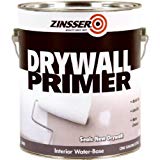
- Water (or other) stains? Drywall primer won’t block them. Kilz Original is the go-to stain blocking primer check this very good product. Another really great deal is Zinsser Cover Stain. Less expensive than others, but will probably handle any water stain in one coat .
- Odor problem? If you don’t like the smell, use Kilz odorless primer: go odorless.
- Mold? Use the mold killing primer (it also comes in 4-quart cans: helpful and better deal).
Remember many primers and paints use toxic ingredients. Read the label and read more in my post about the deadly VOCs.
Is drywall primer necessary?
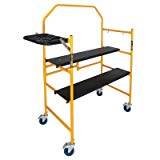
- The drywall paper and the drywall compound (“mud”) are both porous surfaces but they absorb paint at different rates. If you do not equalize them with a primer made for this new wall, you will see the difference and it looks sloppy.
Why you don’t need to overdo it
- High-quality primers are not that expensive and do not contain stain-blockers that jack up the price. Buy just what you need, as overkill will just be a waste of money.
Important tip: With your drywall primer, use a quality roller like this one, not a low-cost one! I like the long nap, but you may prefer the 1-inch, or 3/4-inch. Budget rollers shed lint onto your wall which will cause your wall to feel (and look) like sandpaper. Not only that but rollers are easy to clean. 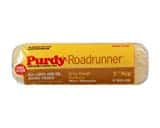 You can soak a good roller cover for days in water and let most of the primer fall to the bottom of your bucket. You can then rinse and even put back on your roller frame to spin it dry. Easy.
You can soak a good roller cover for days in water and let most of the primer fall to the bottom of your bucket. You can then rinse and even put back on your roller frame to spin it dry. Easy.
We use roller covers from Purdy and Wooster: wool/poly blend rollers. The wool gives it absorbancy and the polyester gives it longevity. We use this roller all day, day after day for months before it needs replacing. Just keep it clean between uses.
How to Prime Drywall in 4 Quick Steps
(more details below)
Step 1: Inspect the walls and fix cracks
You can always apply drywall compound to a crack, wait for it to dry and re-sand. We normally use quick-dry spackle or and caulk that are fairly quick to dry and both that don’t shrink.
Step 2: Clean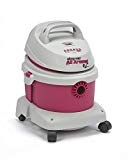
After the joint compound is all sanded, the first thing to do is to dry brush the dust off the walls (it clings). This brush fits on your paint pole or broomstick. Then, without stirring up too much dust, gently sweep the floor. You can use a little Shop-Vac with a paper filter, (not your house vac: it will die), then mop the floor. (read about the types of drywall vacuum sanders here),
Step 3: Priming drywall
Apply 1 coat of your chosen drywall primer sealer (see below).
Step 4: Wait until the primer is dry
All drywall primers are relatively fast drying. Drying time depends on lots of factors like ventilation and humidity.
You only need to apply 1 coat of drywall sealer primer. Don’t delay too long after it is dry before the next coat or before painting.
Details: How to Prime Drywall
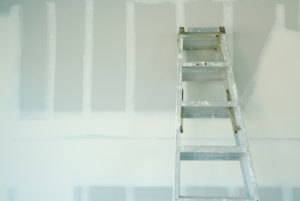
Does new drywall require 3 coats? Mostly yes, and the first must be a drywall primer sealer. There is good news coming below, however about that primer.
Having said that, painting brand new walls is the only time I’d consider using a paint and primer in one, which may save you one coat of paint. See the section on Paint and Primer in One below. This is definitely not the best drywall primer, but it will do. If you do, buy quality paint and primer in one: use Kilz, a very good name in the drywall sealer world, and a very good paint and primer in one. I trust Kilz’s product, it is also a primer with low VOCs. It comes in many colors and sheens.
For you traditional 3-coaters (like me), the first good news is that you don’t have to buy some exotic or expensive primer (assuming you have no mold or stains) for priming drywalls. You don’t need oil-based primer either. The best primer for new drywall are the low-cost primers, as they contain only what is needed: a normal drywall sealer does not need ingredients to seal stains, odors, mold, etc.
If your unpainted drywall has been waiting for a long time, especially in a basement, it may have sprouted some mold or mildew. In this case, you’ll need a little more firepower. If so, you’ll need to read the last section of this post.
Why not just put on 2 coats of paint? One word: Flashing. Because you will see the seams (and screw holes, tape, and corner bead) where the (1) joint compound a.k.a. ‘mud’ meets the (2) paper that is the outer face of the rock. The paper and the drywall compound are different surfaces and they absorb paint at different rates You could apply 5 coats and still have flashing without a good drywall primer. Now you see that a drywall primer sealer means: it seals the pores so they all absorb alike.
Yours Truly learned the hard way: I know you can end up with terrible flashing! So the drywall primer sealer is designed with just the right sealants so there will be no difference in sheen or color changes in your finish paint.
The Zinsser at the top is the low-cost and quality way… and I can’t get over free shipping!
Warning:
Some painters say leftover flat (and only flat) paint is as good as the best drywall primer and will give a good result. No buddy. This does not work out but I need to make the job perfect: perhaps you don’t.
More good news: you do not have to apply a normal heavy coat of paint as you will with your topcoats; you just need to give the new wall a drink, and the job is done. Get the can of primer well shaken (or stirred, Mr. Bond). This coat can be very fast: you will be done in half the time of painting one of your topcoats. Calculate that into your expected quantity (but all paint seller accept unopened cans in return). Even the very best drywall primer does not have to be a heavy coat: just a film will do.
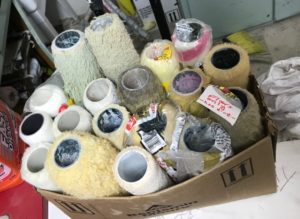
Important first step: clean the room before you paint! After the joint compound is all sanded the first thing to do is to dry brush the dust off the walls (it clings). Then, without stirring up too much dust, gently sweep the floor before painting. You can use a Shop-Vac with a paper filter (not the kind that just has a hollow can for debris unless you like clouds).
This Shop-Vac wet/dry vac comes in many sizes and will never let you down.
Do not use your good vacuum: this dust will kill it !
Then after the floor is mostly clean, mop it. Yes, mop. You don’t want to be kicking around the dust as you finish your paint. This fine dust seems harmless but it will stick to freshly painted walls and turn your new project into vertical sandpaper: ick.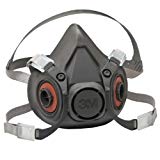
Wear some kind of mask. The 6300 is large for most men and the 6200 medium. Then you need the filters. I simplified the very complex world of respirator masks and filters in this post, but the bottom line is that painters normally wear the half-mask you see just above with these filters: a kit with the outer paper covers to extend the long life of the cartridges that keep you safe.
For non-toxic dust, a honeycomb mask will be fine.
Paint and Primer in One: not the best drywall primer!
Probably ok for your home use, but I cannot say for sure that with paint and primer in one you will not see the difference in the sections of the wall: joints vs. paper, but feel free to try. It is not the best drywall primer solution, but for walls in good new condition, some paints do promise to equalize the surfaces at the same time they leave your color.
I understand you may be very tempted because you have painted before and you want to cut out a whole coat. But remember that the result will not be the same as a traditional 3-coat job using the best primer for drywall. Here a more complete post on paint and primer in one.
Some common questions on how to prime drywall:
- Can I use regular house paint as a primer?
Yes, but no. You will have the blotchy look we discuss above, but you will save the cost of the new primer. Don’t use exterior paints though, as they are very toxic inside a house. If going this way, try to use flat paint. - Can I spray?
Yes, and we do this in large newly constructed rooms. This means renting or buying a DIY airless sprayer, but it can save loads of time. That Graco is quite a reasonable price, and you can re-sell for half of the cost when you are done! This is especially fast for highly textured walls and ceilings. - Can I use spray cans?
Yes for small areas: if you find some imperfections on your wall after you paint and you’d like to quickly prime it, a small can of spray primer may be just the thing. Be aware that most spray primers contain more than you need to seal drywall and will be very hard to clean off if they go astray in the air so mask the floor etc.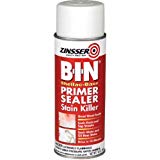
- Can I use drywall primer on wood?
No, you probably need a shellac in our first coat product. Most wood will have sap (which will bleed through a simple primer like drywall primer and every coat of paint you put on after that. Also, the wood’s tree rings that absorb at different rates (the dark ring vs the light ring). Why is that bad? The softer ring will expand differently as the primer dries and you will not be left with a smooth surface. We use BIN alcohol-based primer (liquid quart), a white pigmented shellac, when priming almost all woods. For that, you need rubbing alcohol for clean-up. Good to have the spray can (shown) also. - How long do I have to wait after priming drywall to paint?
Especially with drywall, you will find that the ‘mud’ and the paper of the main sections dry at different speeds. You can easily tell when the last of the primer is dry, usually an hour or two. Don’t rush this step! All drywall primers are relatively fast drying. - Some paint makers will say you must paint within 48 hours after letting the primer dry, but I have never seen any problem waiting longer with the best drywall primer. Dust clinging to the wall while you delay is the only real problem: just use a broom and vacuum and/or mop (see above).
- Can I use a primer (or any paint for that matter) to fill small cracks?
Not really. Some high hiding primers exist and they will fill more cracks than other primers, but at what cost? Drywall primer is cheap so we just fill cracks by hand. If you do manage to have some very small cracks go away after painting, you will find they re-crack quickly in time.
Remember that the wall will have the same contour after it is painted as it did before. Cracks can be caulked (usually just for corners) or spackled in the flat areas (some quick-dry spackles will not shrink-they cost more but they are all we use). You can always apply drywall compound to a crack, wait for it to dry and re-sand, but just get the caulk! We normally use quick-dry spackle and quick dry caulk as we cannot wait. Ignore the bad ratings: pros use just this. Some people don’t know how to use it!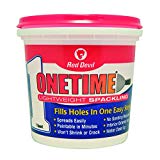
- Can I tint my drywall primer?
Definitely, we do this if we are in doubt about the chosen color’s ability to cover in two coats. That tinted primer is very smart as long as the paint store folks do not ruin the primer’s properties by over-tinting it. You will not get your top-coat color because the paint store folks will not be able to add as much tint as they would with paint.
Especially if you are about to paint with a red, and that includes red-browns, tint your primer gray. Red is notorious due to the colorants that are used to achieve your color, almost all shades of red do not cover well. For some reason a chemist can tell you, the gray primer allows the coverage to maximize. - How can I achieve a “Level 5 Drywall finish”?
You may have heard of different levels of finish, including Level 5 drywall (the smoothest) or skim coating, and so on. A great website for all you ever need to know and more is drywall101.com. It’s all well described on youtube: if you can afford it, this is the very best drywall for your home. This goes beyond the best drywall primer for sure.
Mold or Mildew on Interior Walls
If you just put normal drywall primer sealer over mold (or the black type called mildew), it will continue to grow and that is a two-way street—mold grows into and behind the wall and moves around anywhere that air can penetrate.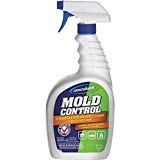
So if see mold and you have started painting, you must stop seal it as soon as you see it. Try my system of buying a cheap paintbrush, cutting the handle so it fits in a small jar. Pour some of your primer in that jar and use that for your spot priming. The best primer for drywall, in this case, is the BIN we mentioned above. (Read about mold resistant paint).
If you have chemical sensitivities, you should call a professional as this is hazardous work.
Again, bleach is not the answer: it’s deadly, literally, and can make the mold that survives multiply faster and live stronger. If you do use bleach you will need a chemical respirator, (read about respirators) and/or a very well ventilated room.
If the area is very black with growth, you may need a stiff bristle brush to get it loose. Let the area dry before the primer is applied. A dehumidifier may be helpful here. They remove the opportunity for mold to grow.
There is also a safe mold-killer Siamons Mold Control: you simply wipe, and let dry. It leaves a mold-blocking shield that is paintable. We prefer the larger one and big 5-gallon buckets (same page) but you may prefer the spray bottle. We like an outdoor pest sprayer to apply liquids like these. 
See pump sprayers on this page. We recommend one that can also handle spraying light stains for your deck next time it needs it. Or click on the image for a low-budget one.
You proceed in the steps of how to paint a room just like any other room which we have written about.
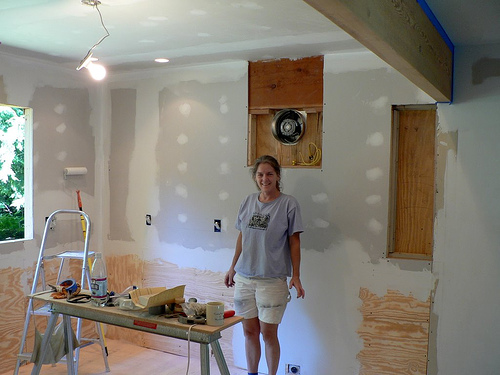
Let’s get dirty!
All you ever needed to know about the difference between sealers, primers, and undercoats in one short article from some good kiwi people in New Zealand.
Here is the way we use primer in situations when we are not sure what kind of stain-blocking power we need: start with the lesser primers like the best drywall primer and if anything bleeds through, hit the spots with the heavy-duty primer. This would apply to the best drywall primer, which may not have the power to block some discoloration.
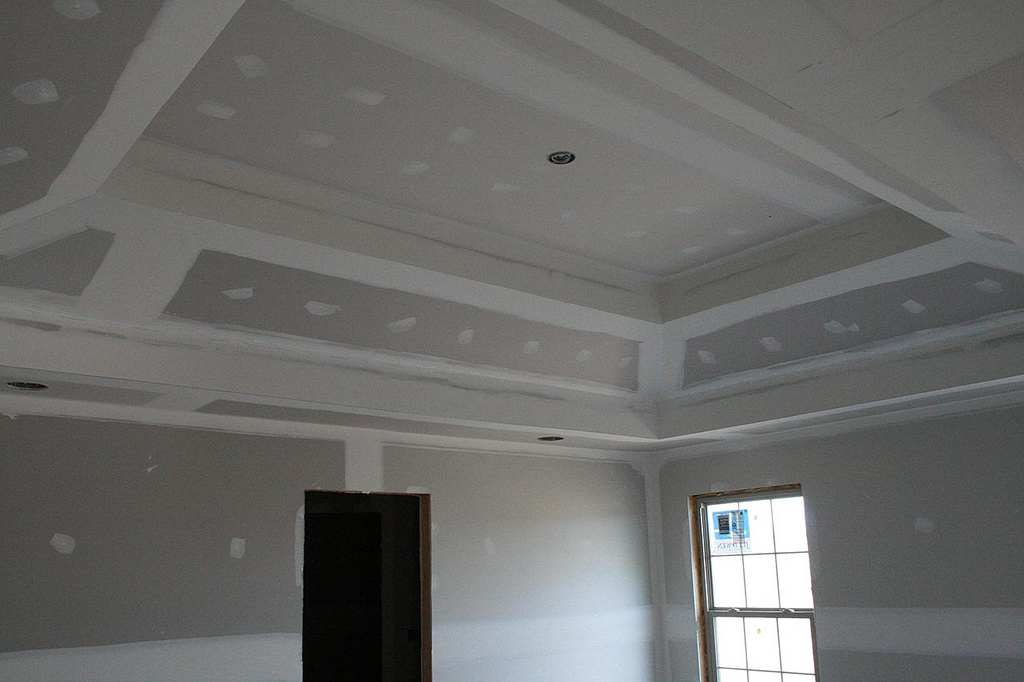
This post is very helpful.
What primer would you recommend for very old (40 yrs) unpainted drywall? It does not appear to be moldy but it has been exposed inside of the garage and the paper is yellowed.
Thank you!
Sand it, dust it clean, spackle if needed, sand that and clean dust off…then basic drywall primer. When dry, check for stains bleeding thru…could take some days. If so use stain killing primer on spots. Then paint. Yellowing is probably not stain…just age.
Have fun. All the primers on this site are linked. Just do search.
First of all, THANK YOU so much for this. So incredibly helpful. We had our rosebud textured walls skim coated over so that they’re (mostly) smooth. Planning to do priming and painting ourselves. We don’t quite need level 5, but would like to resolve a few of the imperfections (aka marks where air bubbles seem to have “popped” and where tools likely left deep marks).
Would using the Zinnser primer you recommended above + 2 coats of paint be sufficient? Or do we need to do more layers of primer for those marks?
Also, any recommendations for alternatives to the Purdy Roadrunner roller cover? Seems like it’s not available locally and will take a few weeks via Amazon.
Yes those air bubbles will be there but after primer and 2 coats you should not see them…and don’t be tooooo picky.
For the primer, you don’t need a high powered primer that blocks stains. Zinnser has many levels. Just basic drywall primer, unless you must spot prime stains…but with a new wall, you should not have stains.
Any expensive wool/poly roller cover. Just avoid the type that sheds lint… when I’m king those china rollers will be BANNED!
B
If you have new construction and don’t know whether you are going to paint or wallpaper a room, which primer should the contractor use? They will be responsible for priming prior to my completing the decorative aspects.
I’m not totally sure but I think basic drywall primer is good for wallpaper. Call a paper store: they will know.
In doubt just don’t prime and make the painters take that off the bill?
b
Hi Brad ,have been looking for answer to question but I guess mine is not normal.
We have an old summer kitchen we have reconstructed and remodeled.
My issues is – low (6-foot 6inches). ceiling with old beams, cobbled together, so I decided to box them in drywall.
It has been a long process but well worth it. They look beautiful, even if they aren’t perfect.
Everything done in level IV skim coat.
Here’s the thing- I like high gloss ultra-white paint.
I was thinking due to the low ceiling that my fav paint would be great to help amplify the light reflection in the room.
I first picked a Behr dry wall plus to use as a primer but with closer inspection it states not to be use with anything but flat paint, so it went back to the store.
Next Behr suggested primer with stain blocker.
Give me advice about painting primed drywall with high gloss paint please.
When you say summer kitchen…is that outdoors? I’m assuming not because you used drywall mud…so here is my answer
I did not know Behr primer was only for flat. I am guessing the quality of the primer is low and when dry, the topcoat will absorb at different rates in spots causing flashing…glossy/not as glossy. I actually have never heard of such a restriction in any primer..that proves my theory about Behr: it’s a con to get you in the store and since you are in the store why not buy some other stuff made in China? Not all that I have to say about HD is bad, some great deals there. But come on… They advertise one-coat coverage in their primer and paint in one. Please.
So…I’d avoid Behr and go to a paint store or order online. I like Fresh Start by Ben Moore or almost any primer by Kilz. Have a look here. You don’t need stain-blocking unless the beams have the resins/tannins that will bleed through the rock/mud…which would not surprise me if you only used mud… With rock, I doubt it would bleed thru.
Good luck!
b
Hi Brad,
Our’s is a fairly new house like 6 years old. I am planning to paint the bedroom and bathroom ..1 primer coat + 2 paint coats. Builder painted the drywalls with flat sherwin williams paint and has never been painted since. Could you please suggest the primer i can go for drywall and trim?
Also, in my bathroom , I have small water stain marks on the wall. Which primer can i use in the bathroom?
Thanks in advance for your help
Thanks
The very drywall primer on this page above. If the trim is painted you dont’ need primer.
If not and you do, then use a primer like Kilz General Purpose shown on this page.
Use a stain blocking primer at least on the spots in the bathroom.
I am pleased I found this site. I have used PVA before and it was a pain and really did not work as well as Home Depot said it would. I will never use it again.
I do have a small water stain on a ceiling. Would a shot of Rustoleum paint/primer spray work for that?
Thanks for the pro info!
Doug
Hi. Yes, I think you’ll be fine.
Cover everything…that stuff won’t come off.
Good luck.
B
Hi Brad
I am in the process of remodeling my bathroom and need some advice on primers for ceilings and walls.
A soffit was removed from the tub area and new drywall was put up for the ceiling over the tub. What type of primer should be used here – new drywall primer or oil based to block moisture?
The rest of the bathroom had been wallpapered. I removed the wallpaper and adhesive with Zinser wallpaper remover. Lots of scraping and washing involved. The walls feel good, but I’ve had issues in the other bath with glue that soaked into the walls bleeding through afterwards. What kind of primer should I use on these walls? Do I need to use oil based or will a Kilz with stain blocker work? I had a painter come in to give me a quote. He said he would use oil based primer but he said the job was too small to work on so I’m stuck doing this myself.
Thanks for your advice on this!
Well, bathroom rock should be rated for moisture, but often people just put regular sheet rock. In either case, it has to be primed with the best. Money is no object here.
Yes and oil is best but if that is too big of a mess (I never clean oil brushes or rollers, but then I rarely use oil anymore), go with a kitchen-bath primer and paint.
Primer: Paint stores can advise you too, but I like Kilz Kitchen and Bath primer as well as Ben moore’s F024 and K046, fancy way of saying the best primer, called Fresh Start, that you can get.
Paint: Aura bath and Spa by BMoore is worth the high cost. But just get a good brand of kithcen / bath paint and you’ll be ok. Run that fan after a shower too!
New to DIY? Sounds like you are! Read my articles about tools (crappy rollers shed lint)…just see my tools page, easy to find.
Thanks for the advice! Can I use the same oil based primer (Think I’ll go with the Kilz kitchen and bath due to availability) on the new ceiling and the walls? BTW the tub surround was gutted, new Hardie board installed and retiled to the ceiling. The ceiling over the tub was replaced with regular Sheetrock. Thanks again!
Yes same primer. I don’t think you mean Hardie board. You mean the green board, sheet rock for moist areas, anyway, does not matter
Give the normal rock 2 coats primer. Just to be sure it’s watertight.
enjoy
b
Hi Brad.
I have a 120 yo house. It was wallpapered, sprayed with popcorn then painted. The wallpaper peeled off rather easily. The walls are horse hair plaster and did not have a finish coat of plaster on them so they were rough. I used gaurdz – per wallpaper glue- first then skim coated with USG dust control. When I sanded, some of the plaster is showing and some is covered(they are very bumpy). I would imagine some of the gaurdz in the high spots was removed. What should go over it with now? I was thinking an oil based primer- but does this cause breathing issues/mold issues for the house and how is this over gaurdz and a variable surface? I was thinking more gaurdz but I hear there is adhesion issues with dust control sheetrock as there is some wax or something in it. I have used a bunch of bin(smokers house) and it adhered well to the joint compound but wasn’t sure about the sanded high areas. Pvc could be an option as well, but people seemed to lean towards oil or gaurdz for horsehair. Can I use scuff ex over any of these? Thank you!!!
Sarah
I can somewhat understand your situation. But since I cannot see it, I’m going to give you the best advice I have here: find a few good painters with long reputations, and have them come look.
You can tell them you are hiring, and then do some or all of it yourself. It’s not that wrong: I was often called for this purpose, but often, the work did materialize for me.
So, let someone see it and give you advice on what they would do, then you decide what to do yourself.
Good luck,
B
I would like to put some texture with joint compound over a painted wall in the living room. Do I need to paint the living room with some kind of primer (bonding??) before applying the compound?
Hi. I don’t think so. If the paint is glossy, maybe sand it with some rough sandpaper…like 60 grit…if flat paint, maybe not necessary. If in between, yes, give it some sanding.
Definitely do a test. Let your mud try and see if you can easily flake it off. If yes, try another sample with primer.
I do think primer would provide a better bite, but probably not enough to make it worth the money.
Good luck,
b
Hi Brad,
Hope you can advise us:)
First, we fixed an enormous amount of nail pops (gently tapped out and cleaned the areas, banged the nails back in, sanded gently, filled with Alex Plus Spackling, sanded surfaces). One wall had wall paper removed (the same procedures as above, though made sure wall surface was clean and smooth). Now, I made the mistake of not priming because the BM dealer said I could use a primer/paint combo. I used the BM Natura (low or no VOC’s) but on the wall that had the wall paper removed, there were areas that the paint bubbled and peeled off while wet leaving a tear on the sheetrock paper. Also, the areas of the other walls where we painted, you can see the nail pop repairs through 2 coats of the Natura paint.
Question, how to fix? I thought about lightly sanding the areas of the sheetrock that peeled, re-spackling, priming, painting again. For the see through nail pops can I just prime over new paint and then paint again? Thanks so much!
A follow up question?
Which primer would you recommend for this project? I prefer low to no VOC’s in any product. Also, what are your thoughts on the BIN shellac primer?
Thank you.
Hi. Sorry to hear this. Your dealer should hire a painter to come fix it having given bad advice! Well, not gonna happen but I would see what credit they will give you. Get the person’s name and write to the company here.
For your wall, you have the basic plan right. You need a primer. For the old walpaper wall, I’m guessing you may have left some glue. It’s hard to get it all…but you have to keep wetting, scraping the goo off and then when dry, sprinkle with a bit of water and see if you can feel any slippery glue. But I guess you are past that stage.
So, since I cannot see it, I may be wrong, but…. Over the spackle spots, yes sand, then give a fine layer of drywall mud. That needs sanding with about 150 grit or even 220. Then prime it all. Shellac is just for stains. You could use a good primer tho… something with some sealer in it. But shellac is going to far. I like this primer for general use.
Do some testing to make sure, but it should hide all the mess. Remember that paint cannot hide 3-D flaws, just color-flaws. So sand it to a level that you will be happy with when it’s all one color.
If worse comes to worse… the dreaded ‘skim coat’. Mud over all of it, sanding, drywall primer plus 2 coats of paint.
Good luck. Call ben moore and complain!
can you please tell me if there is a primer/sealer that dries harder than another?
I run a small paint section in a lumber yard. Costumer asked and I had no answer.
Yes, in general, exterior paints dry softer becaseu they need to expand and contract. Interiors are more brittle. For more details, go right to the experts here.
Good luck.
Brad,
I have brown water spots in my smooth Sheetrock ceiling (8’ x 4’) area, caused by an upstairs over overflowing bathroom sink (ugh!). After drying the ceiling for a couple of days I am ready to paint over the spots. Will an oil based primer work? How many coats? Can I apply regular latex paint over the primer? Will the stains bleed through? Should I get a professional painter to address.
GPD
Oil or latex as long as it has ‘stain blocking’ power. This brown will bleed thru every layer of regular paint. I’d put PrimeLock on it personally. It’s oil but dries fast.
One coat of that should do it. You can test your ceiling paint after that to see that no brown comes through.
A professional will tell you the same thing. You’ll save a lot and who knows if a professional is contagious in these virus times. You can do it!!
Thanks! No stains so I’m good to go!
Brad,
I just reskimmed a “stomped” ceiling using USG Sheetrock Brand All-Purpose Joint Compound. What primer would I use for this application? Looking it up online gives way too many options and opinions, often at odds with each other. Any suggestions you could provide would be greatly appreciated.
Thanks in advance!
Yes, it’s mind-boggling. Like the supermarket: why can’t they just offer 2 soaps?
That mud is the right thing to use and if you have no stains, just use the basic drywall primer at the top of this page. If some stains show (water stains from leaks mostly are what we see), spot prime them with a stain blocker, BIN also on this page. Any primer that promises ‘stain blocking’ will seal up most stains.
Let me know if you have any other Qs
B
Hello Brad, I’m hoping you can provide some insight to a master bedroom paint job that has been going on for 5 years. I’ll try to be as brief as possible. My home was built in 1960, using drywall. When I moved in. the walls were pink, with quite a few cracks and dings in the them. So I repaired the cracks with tape and mudded everything with USG Topping. I then vacuumed and wiped the walls down with a dry towel and primered everything with 2 coats of Kilz Premium (White and Gold can) Indoor/Outdoor latex Primer. Everything looked pretty good. A week or so later, I noticed some small areas that I wanted to put a little mud over, so I marked theses with blue painters tape. Problem is, everywhere that I put the tape, the primer peeled right off with it. Everywhere that I made a repair on the wall, the primer did not stick. Where I primered over existing paint, it stuck. So at this point, I’ve peeled off everything that didn’t stick, made more repairs to pretty much everything all over again. I’m getting ready to primer one wall (just to see what happens) but no matter how I wipe the wall, the mud is still dusty. I tried rolling water on it, cause it seems to make the mud less dusty, but this in turn damages the surface. No matter what I do, I can still run my hand over the dried mud and its dusty. Did I use the wrong primer in the first place? Is there a different way to clean the dust off the walls? I plan on trying the Zinsser you suggested above. I’m just very apprehensive about having to do this job a 3rd time. Thanks for any help you can provide, and for this great site you have here.
Wow, 5 years? or was that 5 days? Is it 5 days that FEELS like years? I know that feeling!
Your approach seems ok. You should not need two coats of primer, but that does not hurt.
Did you sand the drywall compound when dry? The primer SHOULD stick to it whether you sanded or not.
It’s very strange that this is happening.
This should not be happening to good products. Could the mud be old? You wrote:
no matter how I wipe the wall, the mud is still dusty.
That should not be the case. Once sanded, dusted, a primer should stick.
If the problem persists, pick up a can of the BIN or the Zinsser (alcohol-based), or STIX from Ben Moore: Stix has amazing bonding properties.
Let me know what happened when you did more primer.
Hi I found your site while researching how to fix my bathroom ceiling. We had our bathroom gutted four years ago. After new drywall was put up and finished, I primed and painted myself. I used drywall primer, then three coats of different Benjamin Moore paint (couldn’t decide). Forward to now, took a week off work to paint. I was prepping a bit of ceiling around our shower fan and I was able to peel large sheets of paint off the ceiling. Now I don’t know what to do. I’d like to avoid oil paint, if possible. Do you have any suggestions?
Thank you,
Jenny
Hi. It’s not unusual. This is a case however for a coat of a quality oil primer, sorry to tell you. In a confined space like that, definitely wear a respirator: read the post on this site to find the one I use: not expensive and will keep you safe.
Just scrape all that will come off. After years of showers, it’s probably very wet. Put some heat in there and keep the air moving and dry. Give it a long breather. Feel the rock to see if it’s still damp, and when dry, primer and 2 coats of a good bathroom paint. All the products I would use are on this site and most have free shipping.
Good luck!
Brad,
I am having a 400 sf addition built. The drywall guy installed, mudded and sanded the space and then proceeded to paint the entire room with a sprayer and a roller without dusting off the walls at all. Said he didn’t need too! I inspected and put some blue painters tape on some areas that needed to be patched- bug holes etc. and now as I am removing the blue tape it is taking the drywall face with it.
Should primer be strong enough to stick to the wall when blue tape is removed? I am concerned that the dust is giving an adhesion problem for the primer and when I start applying the paint finish coats the primer is going to come off the walls………and I will have a mess on my hands.
Any thoughts or help?
Thanks in advance!
Blue tape is the best at not pulling off paint… But if the paint was still soft, it could absolutely do that.
Your guy is wrong about not dusting. He’s clearly self-taught. Ask him where he trained: from another self-taught painter.
This is the problem with most. I started this way: knowing so little. Then i met a real pro and for 15 yrs got schooled everyday.
The dust could have a role in the adhesion.
Test this: put some blue tape on, press somewhat and pull right away. If the paint has had a few days to cure a bit, nothing should come off.
Make a video also in case this goes to court.
If you have not paid yet, let him know you are considering hiring a new guy and subtracting what is charged from his bill.
Document everything as he may file in small claims. Do it all by email for legal records.
Good luck
b
So, I’ve already painted new drywall with Valspar Optima paint, I did not know I was supposed to prime new drywall first so it’s streaky, now what? Should I prime now or do more coats of paint or sit in the corner and cry…..
Yes, just do a coat of primer link here and 2 coats.
Listen, you have it easy. You should read some of the other horror stories!
Good luck. You only lost a little time!
Oh wow, much easier than I thought it would be! Thank you so much!
You got off easy: you should read some of the other horror stories in these comments.
Just prime with this
Then do 2 coats of your color.
Easy.
No more tears!
b
Hi Brad, I had a contractor do a dry wall repair, but after he sanded it, I just applied my paint on it. Now it looks a little odd with pores here an there and is still dusty when I touch. Can I prime over it now and do another coat of paint.
You applied your paint and it STILL feels dusty? Or are you asking ‘should I primer even though it is dusty after the sanding?”
I certainly hope it is the 2nd.
Dust after sanding is of course expected. The contractor ususlaly does not dust off the walls: That is the painter’s job usually.
It must be done.
If you did not dust and you put primer, now you have dust trapped in the primer. I am afraid this is what you are saying.
This is a mistake, but you can recover.
If you have gritty walls because of this, sand what you can or want… at eye level mostly, and re-prime that only.
Then do a test paint section and see how you like it.
The only other option is to … are you sitting down?… sand it all off and maybe even repair drywall again.
Hopefully your repair is not to big. Just sand until you are happy.
Remember… nobody will notice except you.
b
Hi Brad, thanks for all the stuff on your website, really helpful. I had a drywall repair done, the contractor used mud to patch up the spot. I didn’t use a primer before getting the patch painted, o the patch looks a little different than the other part of the wall. When I touch, it is still a little dusty and has pores here and there. Can I prime now and then apply a paint coat. Looking to avoid sanding the paint off (that would probably disturb the mud texture and I’ll have to ask for a skim coat again)
Appreciate your help
Yes, as I wrote in reply to your other comment, you will need to sand…just be careful not to take off too much mud.
Latex paint is not made for sanding…and only some primers sand well.
But just use 150 grit sandpaper or so… To make the wall uniform, paint the entire wall…not the room, just the wall, including the edges up to the next wall’s corner.
The pores? Should have been sanded better to remove them. There are different kinds of mud: different densities. He may have used a base mud and not a topcoat, which would have fewer pores.
In any case, if necessary, skim coat, sand, prime and paint entire wall..
Good luck!
Hey Brad.
First off, thank you so much for your site. It’s been a huge resource as I’ve been planning to paint our basement.
Now for my question: Similar to Betty up above, we’re planning on painting the exposed ceilings in our basement. The ceiling is the wood joists from the original 1935 construction, Romex, some galvanized metal pipes, some cast iron pipes, foil duct insulation and some copper piping. A lot of different types of surfaces. I’ve been looking at Kilz Adhesion primer but boy is that stuff expensive ($43 per gallon from what I’ve seen). Is that my best option?
We’ll be using a Graco X5 sprayer to do the job. Depending on how the primer alone looks on the ceiling, we might just leave it primed and unpainted. The new drywall we just framed up will be painted off-white.
Thanks again for any thoughts you’ve got for me, and for all the work you put into this site.
Hi. $43 is not that bad for really good primer. Here you need a metal primer over the metal first, then spray a stain-blocking primer: the wood will bleed thru primers that are just for bonding or for drywall. So yes, spend that upfront and you won’t have to start over . The Graco is a good choice…See our sprayer post. I think we got best seller and price…I know I searched a long time.
If you leave primer, it will yellow and also will grab dust more than paint…but that’s ok for some years. Some primer,even Prime Lock (what I would use here, an oil, but will stop all stains) may show some stains coming thru the primer itself, even tho the next coats will be fine. It’s strange: the primer looks bad, but still does it’s job of blocking the stains.
Good luck!
Thanks for the help Brad. So do you think I’d be safe hitting the metal parts with Stix and then going over the rest of the ceiling (wood joists, mostly, with some Romex in there) with Kilz Original?
Hi, Brad,
I’m currently finishing a small room in our basement and have just drywalled and taped the ceiling and I’m ready to prime – I think. The plan for the ceiling is to put a texture on it (like a stomp-sort of thing). My question is: Do I need to do a regular drywall primer on the ceiling before I put the joint compound texture on it or is the texture that I’m putting on going to take care of sealing the drywall?
Secondly, is it necessary to paint the textured ceiling if I’m planning on it being white anyway? If so, would I just use a regular interior latex paint of my choosing or would I need something more along the lines of another coat of primer to go over the texture (or primer and then paint, maybe)?
Thanks!
Hi. No, don’t prime before your texturing. I’ll assume that texture material is itself drywall mud that you will spray? This needs priming also after it dries, so do both at once. The texture material, whatever it is, is not a primer.
Yes you must paint: the unpainted surface will grab dust and will become gray and yellow with time. My prescription is one very full coat of drywall primer followed by one of Ben Moore Ceiling paint. Any primer and any paint is ok, but drywall is the least expensive and you don’t need any stainblocking power (unless you had water stains before…they will eventually bleed thru).
BM Ceiling will cover your well–primed surface in one, but be sure to cover well.
Often we spray these textures as the roller can break off some of it, but if it does, so what? Nobody will ever see it.
Good luck!
Hi Brad, we blew it and put exterior primer inside by mistake! I have mulitple chemical sensitivities and as you wrote.this stuff is quite toxic. It’s been almost 2 months and we can’t get rid of the smell. First he painted over the primer, no luck. Then he used a non-toxic sealer, and it’s a bit better but not nearly good enough for me to survive in the office. Are considering putting drywall mud over the entire room and starting all over, except he also painted the crown molding and trim with the bad primer. Any suggestions? And will re-drywalling with mud work? THANK YOU!!
So sorry to hear this.
Well, there is good news and bad news and an easy way out and a hard way out.
The good news is that by now the VOCs are gone and you are smelling resins etc … other nasty stuff.
More good news is the easy way out: it’s summer and you just need to keep the house ventilated… when cold weather comes, keep the heat on and windows cracked. Flush the air with fans and open doors etc daily.
The bad news is that new drywall will not remove the problem if you want to remove it. Just like the paint over it, drywall will only slow the curing time..the smelly time. IT will just make the process much longer, but less intense.
This is only my opinion: you might call poison control or some specialist to get a better-informed opinion. I do know that all paint takes a few months to totally cure: to full hardness and that it off-gasses during that time.
The sealer you put over it was a mistake….it would have been better to sand it all off.
If you can move your office until winter, that would be the easiest and lowest cost way.
I’d scrape it all off down to the drywall and then skim coat the drywall with new mud, then prime like it’s new wall, which it is. For crown, sand it all off.
Best wishes on this. That painter should do this all for free: a lawyer’s advice would be best but I’d keep this info fromt he painter for now. See if he’ll hang in there.
b
No showers yet….the wall is the outside of the shower enclosure that was repaired when new shower put in.
I see. I wish I could see it in person. Go with the best primers and make sure it’s clean and dry when you apply. Keeping my fingers crossed for you.
b
We just completed a shower replacement and joint compound was used on the outside boundary. It was primed with Benj Moore seal and prime. After about a week we painted and within days it appeared up in the corner and peeled paint and primer from the walls. We presumed the joint compound was not dry when the primer was applied. We then peeled the paint, spackled areas that needed it, sanded, wiped with damp cloth as well as vacuumed the wall. After a day we primed again, after 24 hours painted again, and then after another 48 hours did a second coat. Within 2 days again while carefully removing the tape, the paint and primer was able to be peeled from the wall. The new compound did cover a large area, about 1 1/2 feet by 6 ft high. I am suspecting the primer may be the culprit. Can you help?
Yes, I think so, what primer is it? I assume you are taking showers and the moisture is going right through. I would switch primers for sure. Consider jumping to the ultimate which is a nasty product, but very effective. It is a shellac with white pigment: BIN. It’s alcohol based so it’s very messy: cover everything from drips and shake well. Comes in a spray can too.
Other than that, I’d use a good oil primer if you have it. Something that is designed for good bonding. Also sand the area and dust it well…damp cloth and let dry totally… for best adhesion. My approach would be not to do the whole thing again…just do a test area with the new products. Good luck. Let me know what happens. –Brad
Hi. I have recently removed wallpaper and popcorn in a master bath. It’s all bare drywall. I want to put a primer coat on before bringing contractors in for shower tile work. Using Kilz 2. In an earlier comment you said not to wait to long between coats. Should I hold off until the contractors are finished?
That’s a good question. The guys will tile over the primer right? I think you’ll be ok to prime now, but do call the contractor. Better yet, ask the Kilz company. You can expect a reply the next day.
Kilz Contact here
We had to replace drywall behind our built-in filing cabinetry because of a broken wall drain pipe. The wall was never previously painted because the cabinetry was floor to ceiling. Since we are not going to paint the dray wall because the back of the cabinetry is screwed to the drywall and studs, is there any reason to have to prime the drywall (since it is not being painted and no one sees it)? Your thoughts?
Hi. I’d say no, not necessary. Unless you need a vapor barrier, but most houses has this inside the wall. Good luck.
So I took off wallpaper and tore some of the paper covering of the drywall. This is my plan: Get the walls as smooth as I can with 120 sandpaper. Prime with Kilz original. Fill with drywall smooth. Sand, now my question -do I need to Prime this again before painting. Thanks.
Hi. No, you don’t need primer before the new drywall patch. There is simply no need. Just apply, sand, then prime. Good luck!
Hey Brad. I’ve got some questions about a project I’ve got going on (DIY noob here). I’ve skimmed my walls using joint compound (some three layers of it) to get rid of some old texture the wife and I didn’t like. Now that I’m ready to start sanding and looking into painting, here are the questions I can’t seem to get straight answers to:
– Do I need to prime the newly skimmed walls BEFORE sanding? There’s some conflicting info out there on this topic.
– What do you recommend for cleaning the ungodly amount of dust from the joint compound? Luckily I’m using dust control… which still produces lots of dust.
– Your stud covers drywall panting for new drywall thoroughly. Any recommendations to prep the walls for paint after sanding?
Thank you in advance!
Hi. It’s a common question, so for all who read this, the sequence is always:
– Joint compound on tape, holes etc including skim coats of j.c. Dehumidifiers are helpful to dry in one day if humidity is high in your area.
– Sand (I start with 80 grit and move to 100, then 150: this uses less labor. Orbital sanders and pole/drywall sanders are helpful here…it’s what the pros do. Sometimes a quick patch is needed as the sanding goes too far, but that is dry the next day before you prime).
– Prime with the least expensive of all primers: drywall primer. It will not block any old stain like water damage, but just seals the new rock/mud to prevent flashing of tape/mud/patches. Old paint you have around as a primer will not prevent the mud/rockpaper boundaries from ‘flashing’.
– Paint 2 coats. Always 2 unless you use a very good white or off white.* Reds/yellows may need 3 (synthetic pigments do not cover as well as earthy ones: don’t ask me why!)
Relax in your chair and stare at your gorgeous walls.
–brad
*some primers can be tinted a bit without ruining the properties you are paying for. This is usually gray, and if your final color is a very similar gray, and if you buy good paint, you may only need one coat over the gray primer: ask your paint store.
Hi, What types of primer and brands would you recommend for a old garage walls? I have both
new and old drywall (yellowing). All the walls are unpainted. Do i need to tsp the walls? Thanks
If you have mildew, yes TSP. To block stains, regular drywall prime will not do: it’s for new rock. I’d go with Kilz original. Look at the very top of this article for the link: it’s my go-to/always carry primer for wood knots, water stains, smoke, etc. Good luck!!
Loved the article! We are finishing out our basement and leaving the ceiling exposed. We are going to paint the ceiling with a dark color for the industrial look, but we are on the fence of whether or not we need to use primer before using the paint / primer combo. We will need to Prime the new drywall on the interior walls, so we’re thinking about just using Drywall Primer for the ceiling and the walls. What would you do, Brad?
Hi. It’s not clear what the exposed ceiling is: rafters? Pipes? If drywall rock, yes prime even if black later. If pipes, yes, metal primer to block rust. If rafters…hmmm. Hard to know if the pine resin will show in the dark paint. Drywall primer will NOT take care of that…You would use the Kilz Original or BIN, but the BIN is alcohol based: the nuclear option. If I did not cover it, write here again as to what the ceiling really is: if you can send me a photo, that is worth 1000 words, but takes one million times the memory…ha ha…geek joke. Good luck! PS you dark color is not clear either, and how dark is important. —b
Update: She replied with this and a photo:
Hi Brad,
Thank you so much for your response! I could not see where I could attach a picture on the website, so I’m writing my reply back here. We absolutely do not want to use a primer that will give off a strong odor since we have a small child, and my husband is extremely sensitive to chemical smells. Our original plan was to simply use a primer and paint combo on the ceiling and then use the Drywall Primer for all of the walls. We are using a paint sprayer for all of the painting so thought it would not be too much more work to simply use the Drywall Primer on the ceiling as well for added paint stability. Given the attached pictures and our limited choices for primer, do you think that we need to use the Drywall Primer to prime the ceiling or simply use a paint/primer combo? Also, the ceiling will be painted Sherwin Williams cyberspace.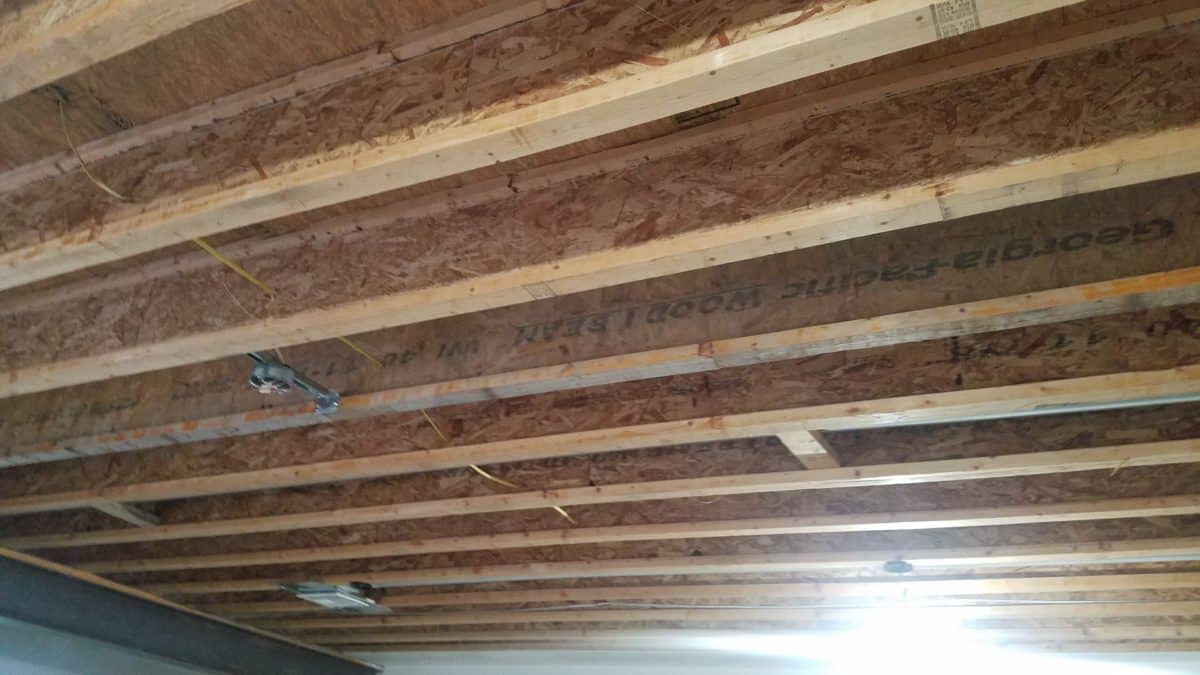
My reply is below your photo:
Hi again. Now I see. A photo is worth a thousand words, so I’ll keep it short. NOT drywall primer. There is no stain blocker in it and it will allow all the pine and spruce resins in your rafters to bleed through. You are putting up a very dark color, but you still want to block those stains. I’d suggest one of 2 things: yes, give paint and primer a try. Modern products have glass beads that settle very closely and block stains. Yes, glass. Since you are spraying, a sure-fire way is to spray Kilz Original, which will do the nasty work. Test it first: apply on the rafter, then coat with WHITE to see if any stains come thru. White will show easily. You’ll need a healthy 2 coats of the final coat… Good luck. Please send me a photo when you are done? I’m excited, but I get to sit here and watch… 🙂
I will definitely send pics of the final product! Last question: do you recommend rolling or spraying the walls once we are ready to apply the paint? We will spray the primer and the ceiling.
Yes indeed, spray is best.
Thank you Brad – the RX did 80% of what was supposed to do – but not on the whole area – i still have some spots where i might sanded too ruff so paper looks like bit damaged than the rest – anyway – added 1 cote of prime last night but left early so i didn’t have time to check it- will cote one more time and if not good then i might try High Build primer to see if it will smooth it out. I’ll post some pictures with before and after – for sure more ppl like me out there 🙂
I spoke to someone at ‘Real Milk Paint’, and he told me that ‘their’ milk paint will adhere to Zinsser Bulls Eye 123. I found that an article in their web site confirms this as well.
Problems- Priming with milk paint costs $50/ gallon.
Coverage is poor- 3 gal./450 sq ft.
After painting the basement ceiling of my project with it and burning up 3 gal. with my new airless sprayer (which may well be part of the problem), I decided that I need a different approach, such as priming with a water-based primer before coating with milk paint. Or perhaps rather, forgetting about milk paint on the ceiling and walls (or even just the ceiling), and using regular water-based.
I NEED the milk paint for the cabinets; I love the finish I get with it by sanding/burnishing, and refuse to burn it all up on the ceiling.
The appeal of milk paint? Totally natural, you could probably drink some. I am basically sick of things that are man-made if there is another, natural option. I have read that the pyramids were coated with milk paint.
Question- How does one avoid the initial Burst/Blast of paint when depressing the trigger on the sprayer when spraying a large surface?
Thank you for your timely response to my first question
Pete
Yes, I saw that about milk paint but never heard that about the pyramids. I did hear they probably used water and floats to lift the blocks! Anyway, spraying takes a touch. The thing to do is to keep the tip moving quickly when you first squeeze and then when you reverse direction to give a quick flip of the wrist. Practice with water on your house or just into cardboard etc. Milk paint is going to get a post here in the future I think now based on your comments. Thanks for all that and good luck!!
Thank you for this nice article. I’m finishing my basement and I drywall it with the brown paper inside (i know – never drink and finish a basement). I spray it with RX35 last night and was wondering if I need a second Coat of the RX35 from Roman or I should be focused on 2-3 primer coats. What primer do you recommend?
Thank you!
Hi. Did the paper wrinkle up? I would think it’s all gooey now…but if not, don’t just start painting, get a brush in the finish paint and do a square foot and be sure to cross a seam to see if the seam is different from the middle of the rock board. Let me know here? A photo would be helpful to future readers. Funny story, but you should definitely drink and paint! So many mornings in paint stores I could smell it on the breath of hungover painters: they have a bad rep for that for good reason. SOmehow I escaped that trap! Good luck!
Hello Brad,
I just got done priming a finished basement ceiling with milk paint with a bonding agent. The suggestion that the milk paint company gave was: “do not use primer, milk paint should be applied directly to the material so that it can penetrate”.
Milk paint is twice as expensive as a water-based primer and the coverage is significantly less per gallon; as well it requires mixing and waiting.
I know that this is a long shot because you are probably wondering just exactly is milk paint, but, do you know if milk paint will ‘adhere’ to primed sheetrock walls?
It makes sense that it would because milk paint itself, is applied in two (at least) coats, and certainly ‘adheres’ to itself. But I would like my theory confirmed.
Thanks,
Pete
Hi.
I’ve never used it, but a quick google search agrees with you…you can put on drywall without primer. I have seen that brand around the internets… Is there any problem?
Sorry for the delay….
–Brad
I have a newly sheetrocked bathroom in green board i want to prime and seal these walls as best i can because ship lap will be covering the walls as a decorative look. Also the ceiling of the shower is green board. What is my best option for primer/ sealee to avoid mositure/ mold thanks
Hi. The ordinary drywall primer is made for green board too, but if you have any concern about it getting wet, go with the oil. It’s much nastier, though they say ‘no odor’…still wear a respirator please. We have a respirator post that simplifies that too.
Key is to seal out the moisture from getting under your tile/shower etc.
Good luck,
Brad
Dear Brad, I have some sloping ceiling drywall that was primed 6 or 7 years ago, and never painted. Would it be best to re-prime it before painting? Thanks, Judith
Hard to say without seeing it. Since you don’t want to put an expensive ceiling paint (use the best and you’ll only need one coat) and then see stains bleeding through, perhaps you should do a primer coat. I would. Probably less work in the end. Dust with broom, prime with roller only…probably no brushing in corners for primer, then use the Ben Moore ceiling paint. No doubts then. Good luck!
My house is 7 years old and all the walls are textured finish and painted in cottage cream. I want to repaint ceilings and walls. What are your recommendations for primer, wall paint and ceiling paint and how many coats. Thank you.
Whether your ceilings are textured or not… I’m guessing not?…. if they have staining or discoloration, yes use a primer. If not discolored, then probably no primer.
It’s all in this post which explains primer in almost all cases. At the top of that post, click ‘medium powered primer’. This will stop any staining. Perhaps you can get away with just priming stains/spots. Do some testing to save A LOT of work. Good luck,
Brad
New drywall against lip of new stand up shower install. What’s the order for these next four steps? I’m thinking caulk, prime, texture, paint. Thanks. Dan.
Hi Dan, thanks for writing.
You have it almost right… just do the primer before the caulk. The sealed drywall can grab better than the porous paper of the drywall.
But….
If your texture material is porous also, do that before priming. If it is ‘drywall mud’, it will need primer. Write again if not sure, and good luck!
Brad
If I am skim coating a textured wall with all purpose compound, for the purpose of installing wallpaper, do I need to use any of the recommended primers before wallpapering? The skim coating left behind a dusty feel to the wall that the wallpaper is not adhering to very well. I haven’t been able to find information on the proper primer to use over the skim coat. Thank you!
Hi and thanks for writing. Yes, although I did very little paper professionally, it sounds to me that you need a bonding surface and if it is powdery or chalky, your paper will probably not last long. Go with the low-cost drywall primer on this ‘Best Drywall Primer’ post. Good luck!
Brad, thank you for all the great info on primer, paint, and applying them. You are a plethora of information, that’s a good thing and if I was to hire a first class painter, you would be my 1st and only chose, if you want the best you have start with the best, you and I have made all the mistakes, now we think we are a well oiled machine *$*@+(/*& strike that, we know we are a well oiled machine! One more thing, I’m a finish carpenter, and a level 5, again thank you. This is a saying that a old man laid on me a long time ago and it will stand the test of time. THE BITTERNESS OF POOR QUALITY LINGERS LONGER THAN THE SWEETNESS OF A LOW PRICE…..